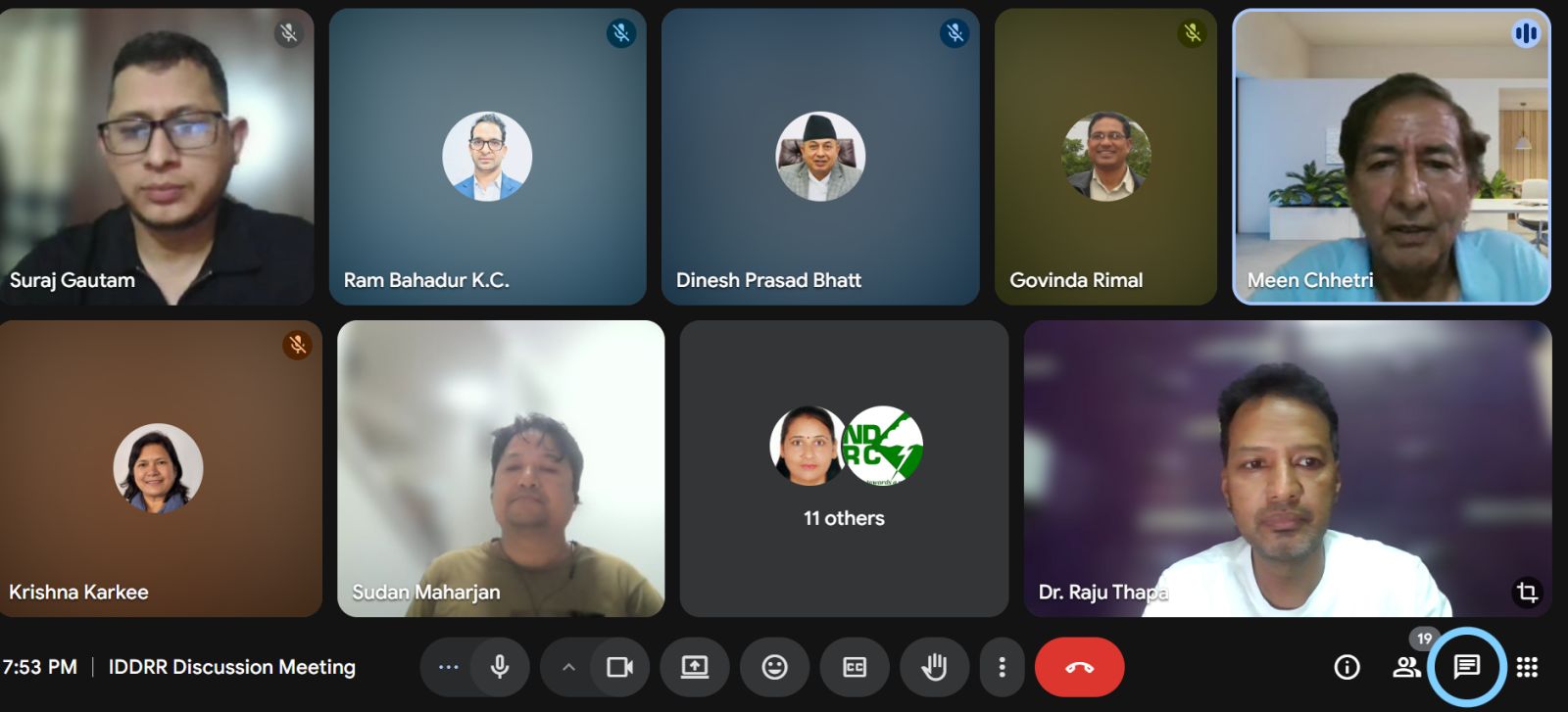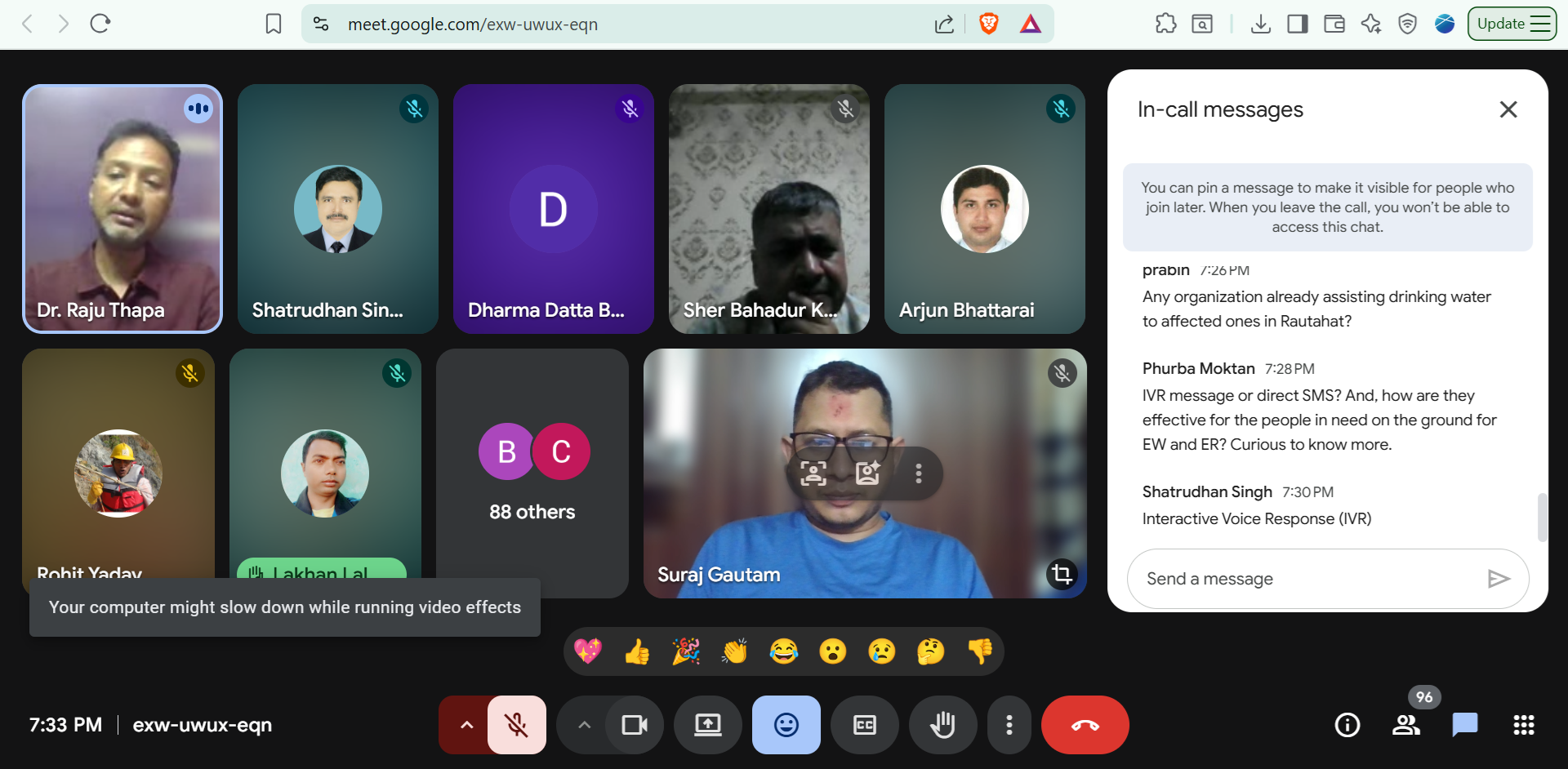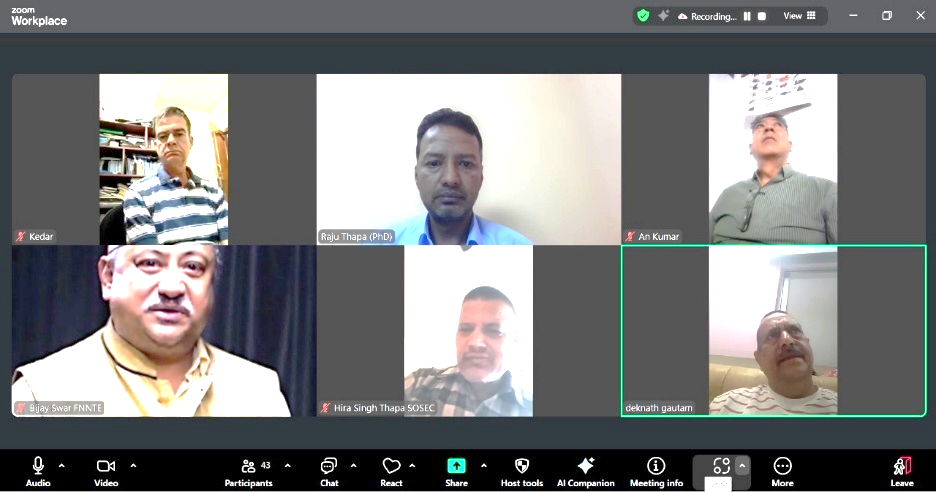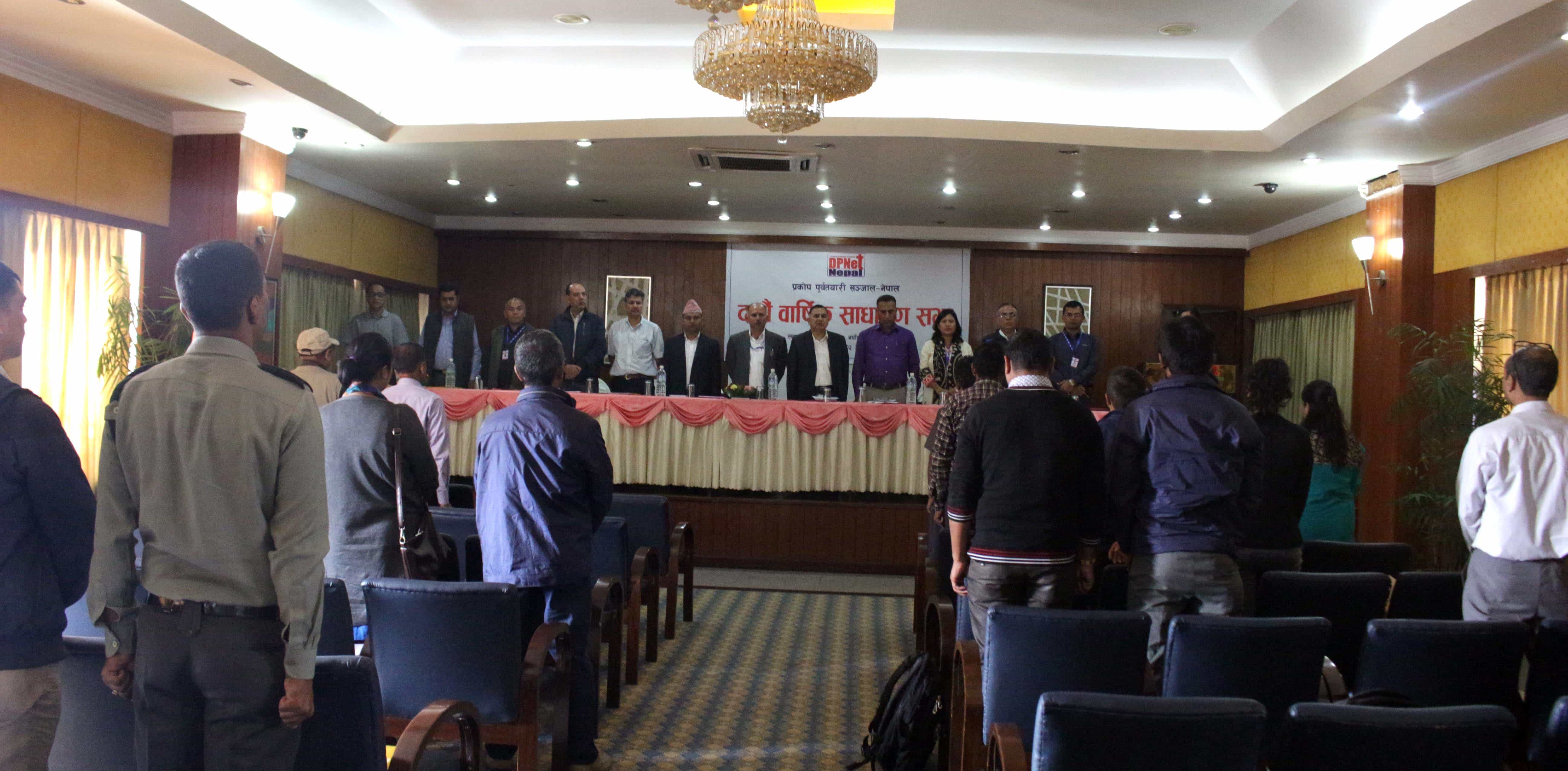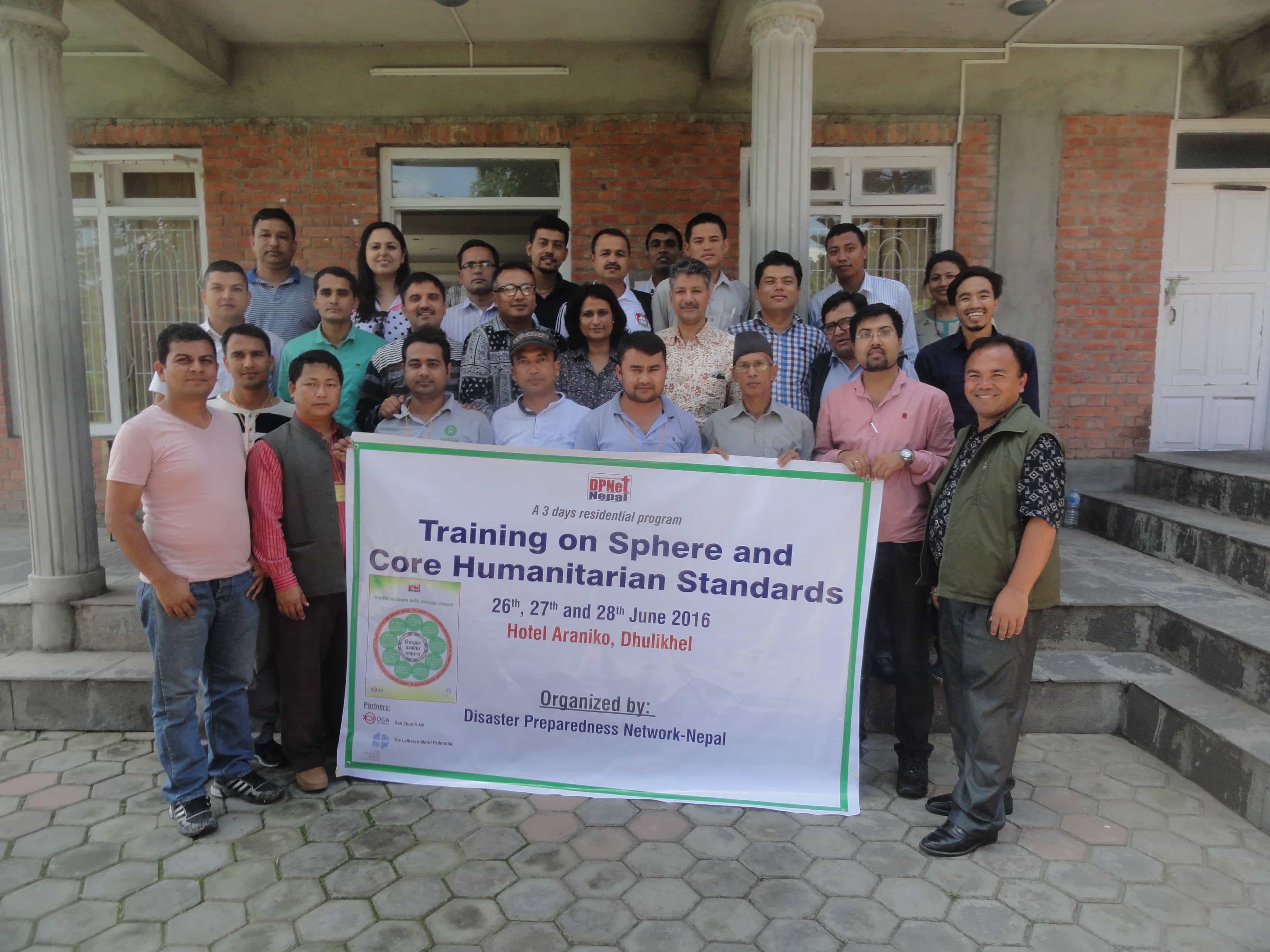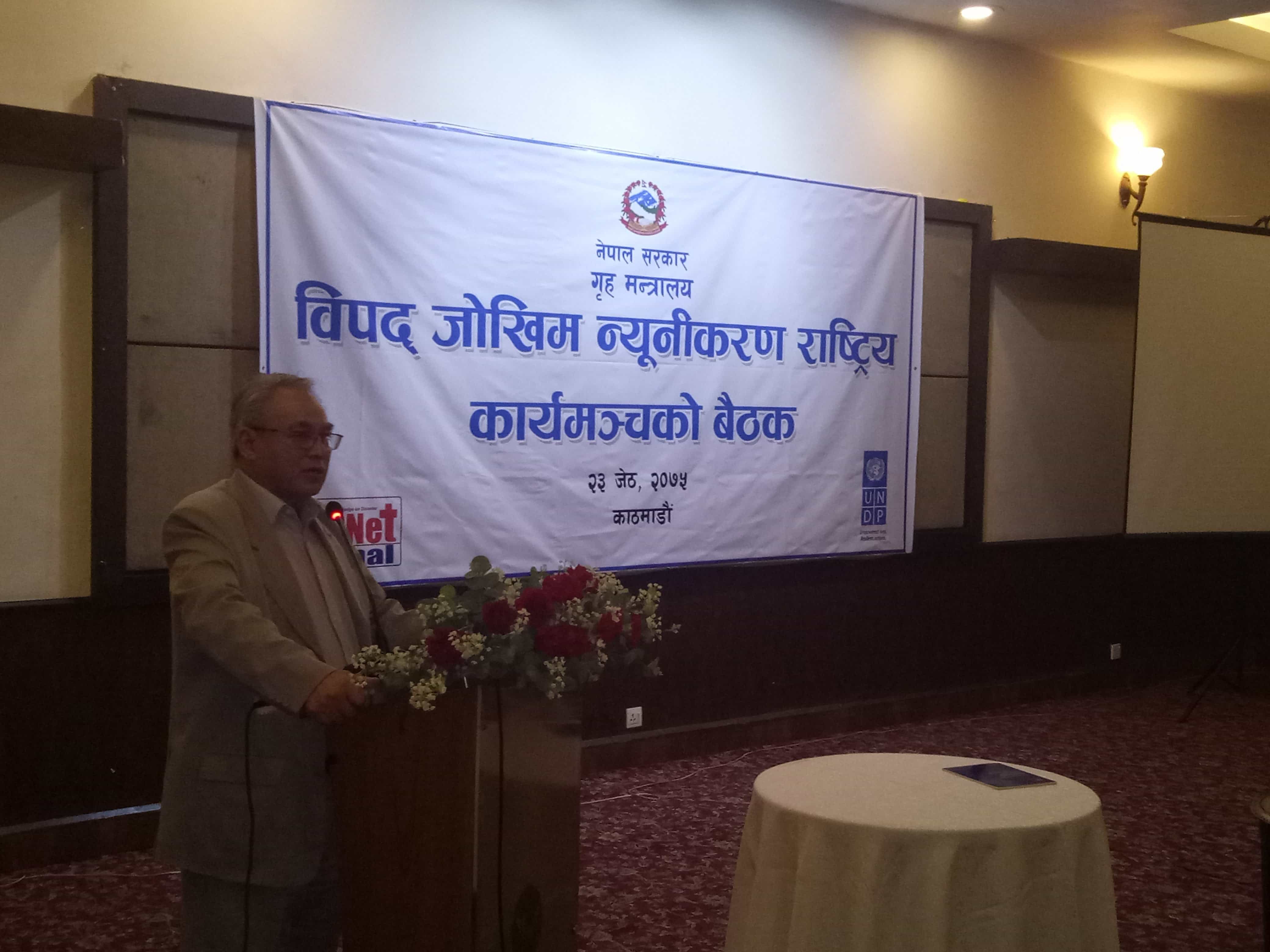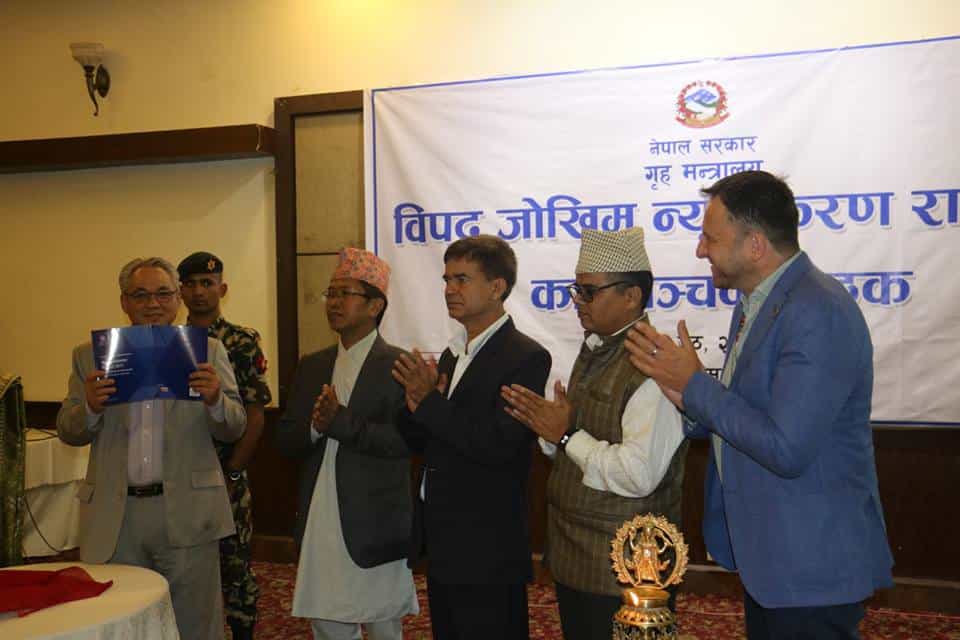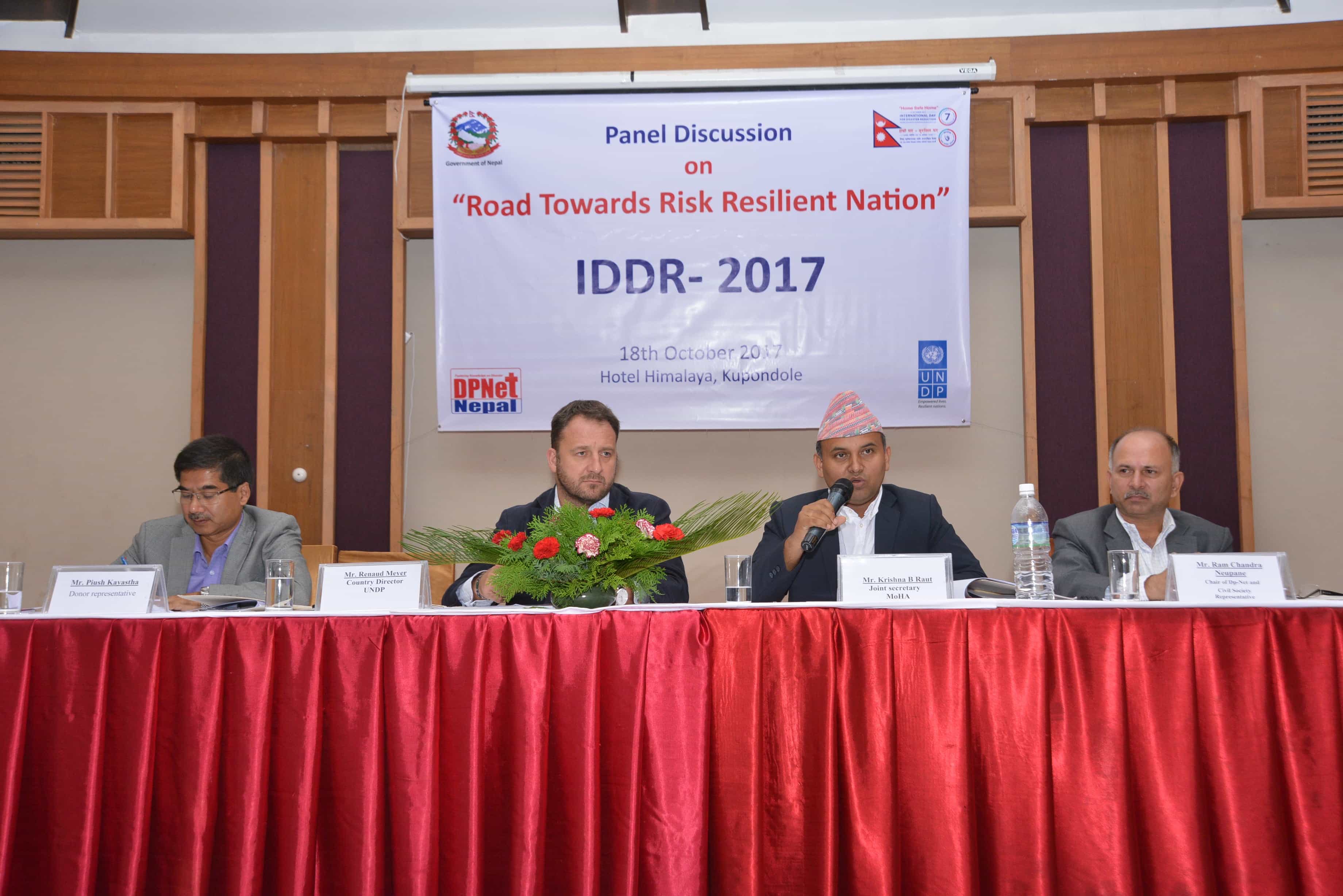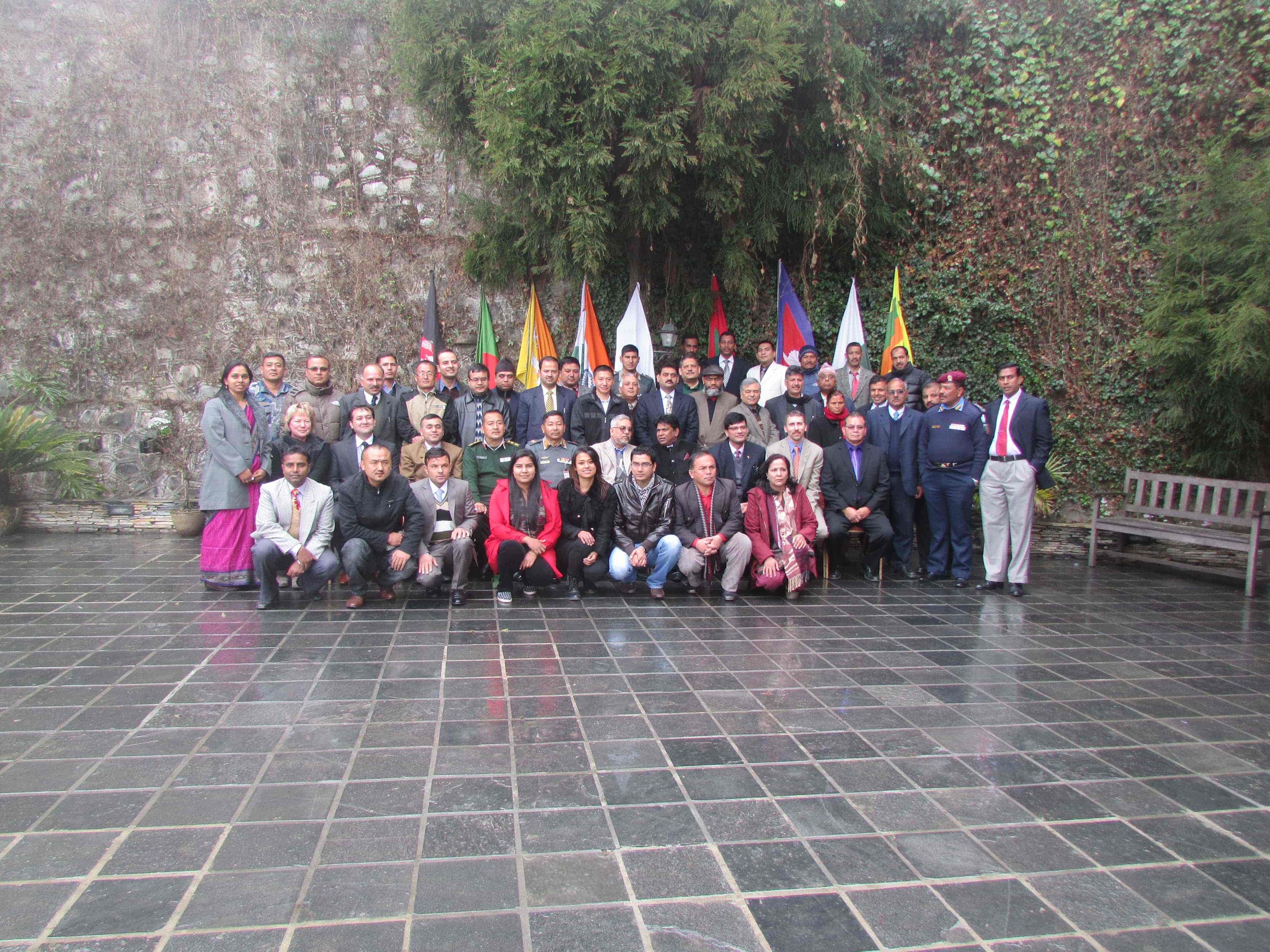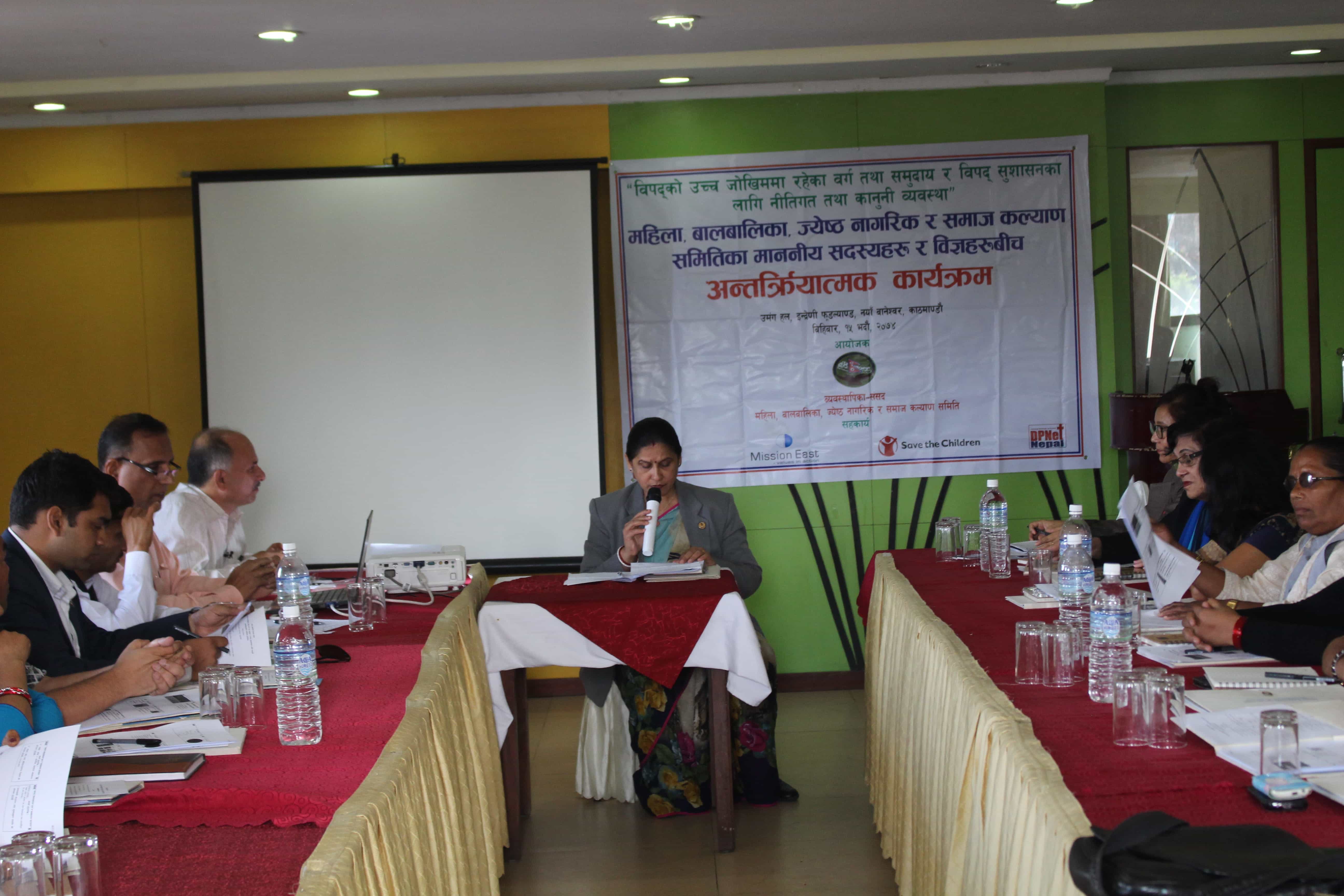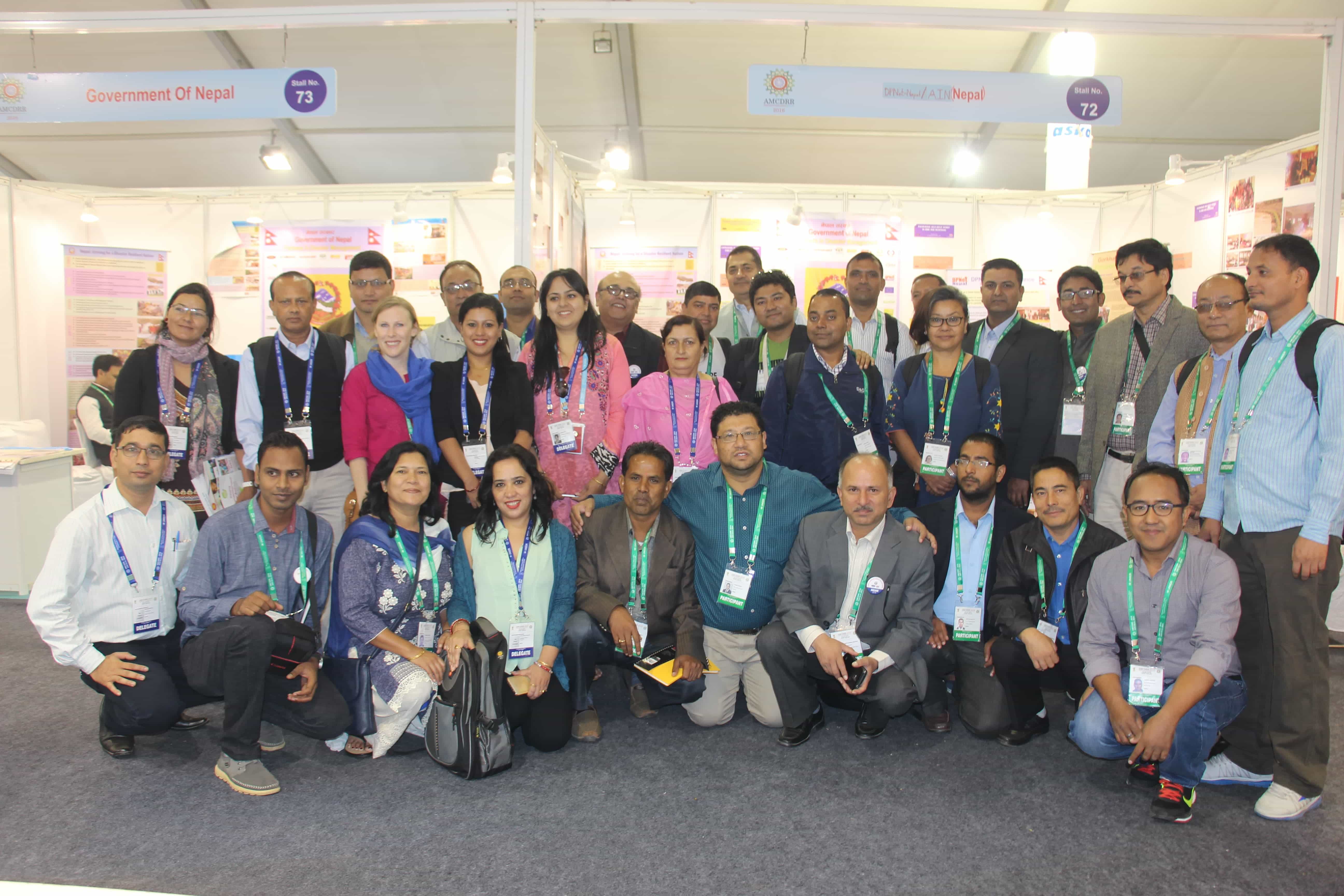Interaction Program on Provincial Disaster Risk Reduction at Lumbini Province

On November 26, 2023, the Ministry of Home Affairs, Lumbini Province (MoHA), led an event titled 'Interaction Program on Provincial Disaster Risk Reduction.' The event, organized by DPNet-Nepal and financially and technically supported by USAID’s Tayar Nepal, aimed to enhance Disaster Risk Governance in Lumbini Province, Nepal. The primary focus of the interaction was to evaluate the effectiveness and efficiency of acts, policies, and follow-ups related to DRR at the provincial level. Mr. Lalbabu Kawari, Province Secretary of MoHA, Lumbini Province, chaired the event, with Hon. Dr. Nahakul K.C, Vice Chairperson, Lumbini Province Planning Commission, Lumbini Province, serving as the Chief Guest. Various personals with province secretaries from different ministries of Lumbini Province, Mr. Surya Bahadur Thapa, Chair of DPNet Nepal, and representatives from the Nepal Army, Nepal Police, Armed Police Force, Nepal Red Cross Society, NGO Federation, and NGOs operating in Lumbini Province were among the guests present at the event.
Ms. Manju Kumari Pokharel, Legal Officer and Disaster Focal Person of MoHA, Lumbini Province started the program with a warm welcome to all the attendees of the program.
Mr. Kedar Neupane, Former Secretary of the Government of Nepal and Advisor of DPNet Nepal expressed that disasters are causing significant physical, economic, and social losses in Lumbini Province, which encompasses diverse geographical features ranging from hills and Chure hills to the Terai, exposing it to a variety of disasters. He noted that while awareness about these disasters may not be as widespread within the community. He highlighted the importance of considering different phases of disasters, including pre and post-stages, and expressed concern about the need to protect the Chure region. He also emphasized the challenge of linking development with disaster risk reduction. He stated that there is a need to consider the lessons from various casualties, such as those caused by wild animals, consumption of wild mushrooms, and suffocation due to winter fires, in Lumbini province. He also focused on the Tinau and Rapti rivers causing floods, along with difficulties from monkeys, wild boars, and elephants to farmers, as well as fire events in Narainapur, Banke. He drew attention to road accidents causing a majority of daily casualties, emphasizing the importance of considering infrastructure quality to minimize disaster impact. He underscored the need to give equal consideration to both rescue and post-disaster operations and pre-disaster preparations. He praised the efforts of security personnel in rescue operations and acknowledged the positive contributions of the non-government sector in DRR. To mitigate the impact of disasters, he advocated for the effective utilization of technology and experience. He stressed the importance of raising awareness to reduce the impact of disasters and called for an increased focus on using indigenous technology while integrating foreign advancements in the local context. Mr. Neupane advised for close coordination within the three tiers of government and the non-government sector. Finally, he requested the chief guest to incorporate aspects of disaster management into the planning of the province.
Mr. Surya Bahadur Thapa, Chair of DPNet, initially expressed gratitude to MoHA for coordinating the program and extended thanks to the distinguished guests and participants for their involvement. Subsequently, Mr. Thapa commenced his presentation with an overview of DPNet Nepal's history, established in 1996 A.D. DPNet is described as an umbrella organization, comprising members from I/NGOs and UN agencies, collectively engaged in the field of Disaster Risk Reduction (DRR). Additionally, DPNet serves as the secretariat office for the National Platform for DRR, organizing various international, national, and regional conferences in the DRR field as a networking organization.
During his presentation, Mr. Thapa delineated DPNet's operational focus areas, highlighting key pillars such as policy advocacy, knowledge management, capacity building, coordination, and networking. He shared insights into various publications released by DPNet Nepal and presented a graphical representation of integrated disaster incidents from 2070 to 2079 B.S., emphasizing the major five disaster events in the year 2079 B.S. categorized based on the number of incidents as fire, landslide, animal attack, thunderbolt, and forest fire. Mr. Thapa provided a detailed list of policy provisions relevant to disaster management, including legislative documents such as the Constitution of Nepal, the Disaster Risk Reduction and Management Act of 2074, the Disaster Risk Reduction and Management Regulation of 2076, and the Local Government Operation Act of 2074. Other significant policies mentioned encompassed the Urban Planning & Development Act, the Building Code for Nepal, Sustainable Development Goals (2015-2030), and the Environment Conservation Act of 2076.
Mr. Thapa also conveyed his experience from previous relief operations in Lumbini Province, specifically during the Tinau River Flood and the Marchawar inundation. Additionally, he discussed his involvement in the reconstruction of houses in the aftermath of the Marchawar inundation.In the overview of the August 11, 2023, discussion, Mr. Thapa focused on defining provincial roles based on the type of disaster, collaborative training between security forces and citizens, cooperation between the government and private sectors in data management and resource utilization, and the mobilization of local resources and knowledge. He also outlined the historical context of the National Platform for Disaster Risk Reduction (NPDRR) formation in Nepal, dating back to 2069 B.S., guided by UN directives. Mr. Thapa emphasized the collaborative role of NPDRR at the national, regional, and international levels and advocated for the establishment of PPDRR in Lumbini Province. He also urged the chief guest to integrate the suggestions and recommendations from the program into the plans of Lumbini Province.
Mr. Manoj Panthi, Nepal Disaster Resilient Network shared his experience in the preparation of District Disaster Risk Reduction Plans (DPRP) for various districts in this province but he still he expressed that these plans are not being revised as needed. He noted that while legal documents are in place, they are not being utilized effectively, and response plans should be updated to address emerging disasters and hazards. Mr. Panthi identified street cattle as a major problem in the province, leading to road accidents. He also emphasized the importance of addressing the un-engineered and unmanaged settlements of marginalized people. Highlighting the significance of a proper early warning system, he shared insights from past flood experiences and stressed the need to consider pre-disaster measures. Additionally, Mr. Panthi pointed out the importance of including snake bites in disaster considerations in the province.
Mr. Jagannath Kurmi emphasized the existence of all the necessary documents but expressed concern that those at risk are not adequately informed. He stressed the importance of the provincial government and local people taking the lead in document preparation and planning, with development partners only playing a supportive role. Mr. Kurmi highlighted the need to raise awareness in the local language and underscored the importance of community involvement in addressing their specific issues during the preparation of legal documents. Drawing from his past experience, he shared insights that the communities affected by disasters should actively participate in the preparation and implementation of programs related to disaster risk reduction. Mr. Kurmi pointed out the inclusion of animal attacks and snake bites in the definition of disasters, yet stated that the affected communities have not yet received the necessary relief and compensation.
Mr. Umakant Pant, NGO Federation expressed his concern for protecting wetlands and forests in the province. He expressed the need for a small pond for ground recharge and to control the impact of flowing water. He also shared that the Chure region should be protected and unnecessary encroachment of forest and Chure should be stopped. He added the need to utilize indigenous technology, protecting the forest, water resources, and rivers for proper DRR within the province.
Ms. Keulapati Chaudary expressed her concern that Children, women, pregnant and lactating women should be considered during disasters. Sharing her past experience, she highlighted that due to a lack of awareness, no one gets ready to rescue people affected by road accidents. She encouraged the need to target some advocacy and awareness programs to minimize the risk of casualties of road accidents.
Mr. Resham Khatri, Nepal Police informed that they have trained 125 human resources within the province. He stated that there is a limitation of resources including the rescue materials. He also informed that they have been engaged in a Community Police coordination program including Disaster awareness and road accidents and there is an immediate requirement to train the people to get themselves in first aid immediately after road accidents and other disasters.
Mr. Deepak Bahadur Balami, APF highlighted the need for the Local government to utilize the disaster fund for pre-disaster preparedness rather than for post-disaster relief. He shared that the APF has been sharing and conducting awareness in schools and the community. He also focused on how local people and the community should be prepared as first responders and that the local level and people should engage in disaster risk reduction efforts.
Dr. Nahakul K.C., Chief Guest, expressed gratitude to the MoHA and DPNet for organizing the program. He acknowledged the abundance of legal documents and institutions dedicated to addressing disaster and climate change. However, he highlighted the persistent challenge of effectively executing these measures. Despite the limitations faced by provincial governments in execution, Dr. K.C. noted that they have still formulated legal documents related to DRR. Dr. K.C. mentioned the impact of the Jajarkot earthquake on East Rukum and Rolpa of Lumbini Province. Additionally, he mentioned that the province experiences annual floods from the Rapti and Babai rivers. While commending the government’s coordination in disseminating information, he emphasized the crucial need for communication in local languages. He cautioned against a blanket approach in DRR. Dr. K.C. stressed the importance of properly managing information dissemination, drawing from his own challenges during the Koshi flood. He also highlighted the significance of embracing indigenous technologies, such as the bamboo embankments of the Tharu community. Dr. K.C. emphasized the necessity of establishing vertical linkages between the plans and policies of 109 local governments and those of the province. He provided insights into ongoing efforts aimed at overcoming technological deficiencies. Dr. K.C. stated about the inclusion of a new chapter in the provincial plan that explores the relationship between wild animals and citizens. Furthermore, he recognized the importance of establishing a robust connection between income generation and resilience, as outlined by the Provincial Planning Commission. Dr. K.C. encouraged continued collaboration and innovation, emphasizing the need for strategies and execution tailored to the unique challenges faced by each community within the province.
Mr. Lalbabu Kawari, Program Chair, expressed heartfelt appreciation to USAID and DPNet for their pivotal support and coordination in the ongoing disaster response program in Lumbini Province. Offering insights into the proactive measures taken, Mr. Kawari highlighted the dynamic role of the MoHA in actively leading, coordinating, and monitoring activities in the region. He expressed that a comprehensive 7-year strategic plan, guidelines, and policies, including relief and rescue efforts, have been implemented, allocating 1.5 crores to disaster relief and reconstruction. Addressing the recent Jajarkot Earthquake in Karnali Province, Mr. Kawari shared that the provincial government swiftly dispatched a rescue team and a medical team, operating under the guidance of Provincial Home Minister Santosh Kumar Pandey. Despite legal challenges, Lumbini Province has set aside an impressive ten crore fund for immediate response, with a strategic emphasis on pre-disaster preparation. In emphasizing the province's commitment to risk reduction, Mr. Kawari detailed ongoing initiatives such as drills, simulation exercises, and public awareness campaigns. Recognizing the essential role of communities as first responders in DRR efforts, Mr. Kawari emphasized a dedication to enhancing community involvement. The MoHA is actively working to increase engagement and participation in DRR, supported by various relief schemes tailored for affected communities. Notably, efforts are underway to incorporate the Community Disaster Management Committee (CDMC) into the upcoming Disaster Act at the provincial level. Mr. Kawari further stressed the imperative for improved public awareness and highlighted collaborative endeavors with security forces and local government. This multifaceted approach seeks to fortify disaster response capabilities, ensuring a resilient and community-centric framework in Lumbini Province.
